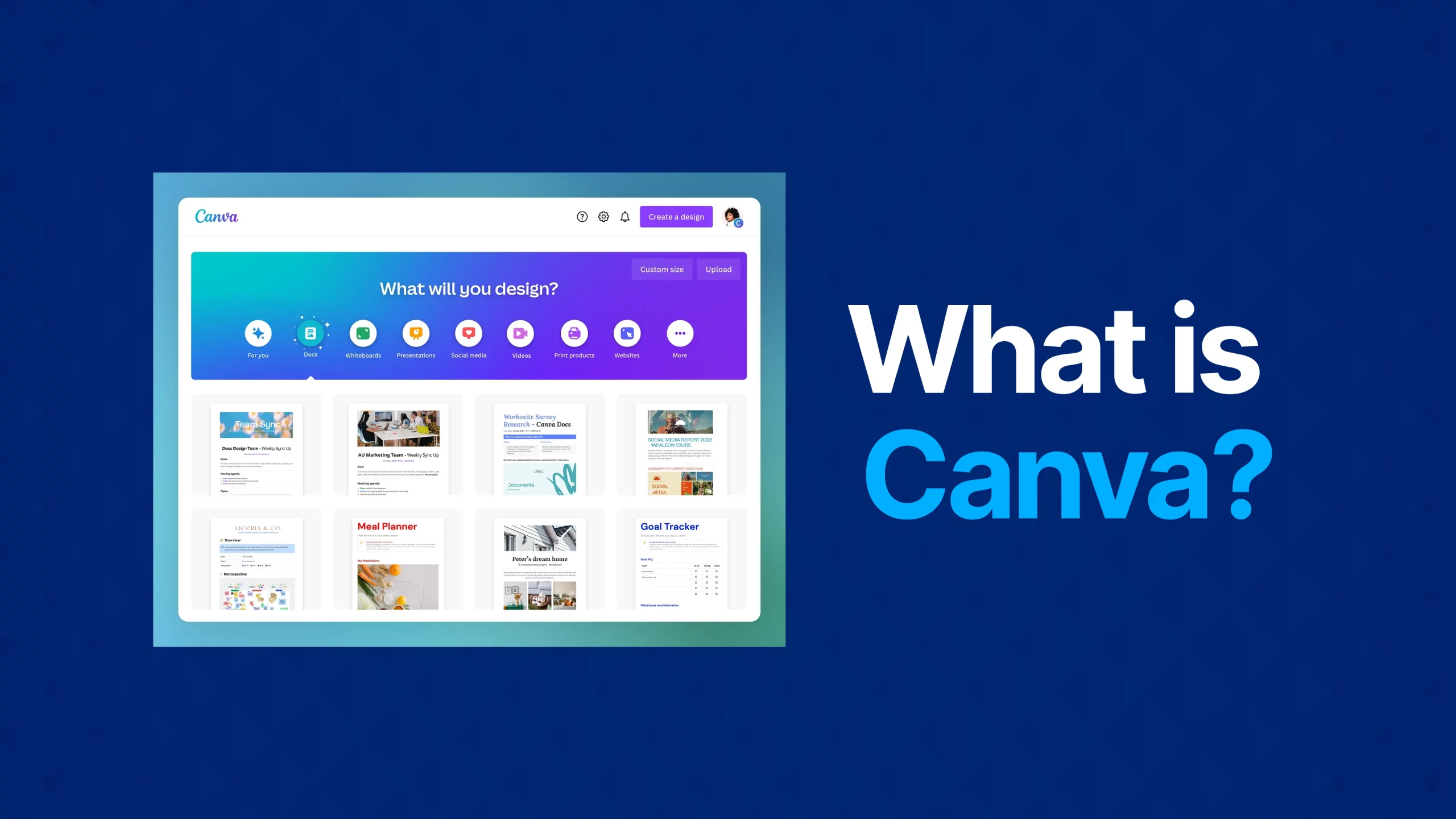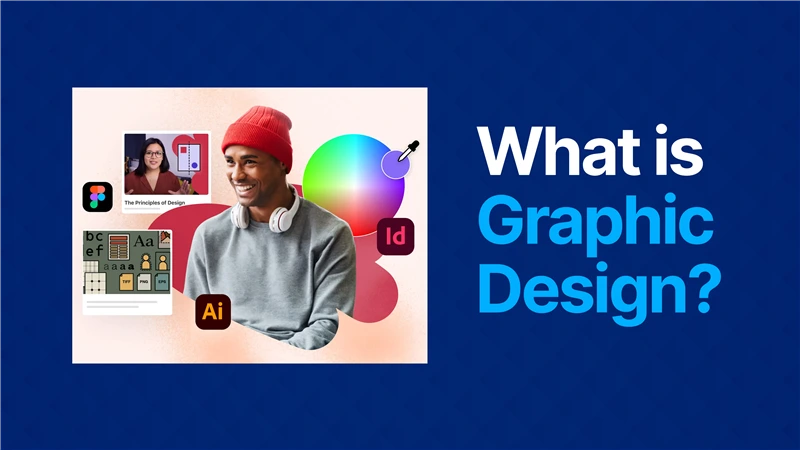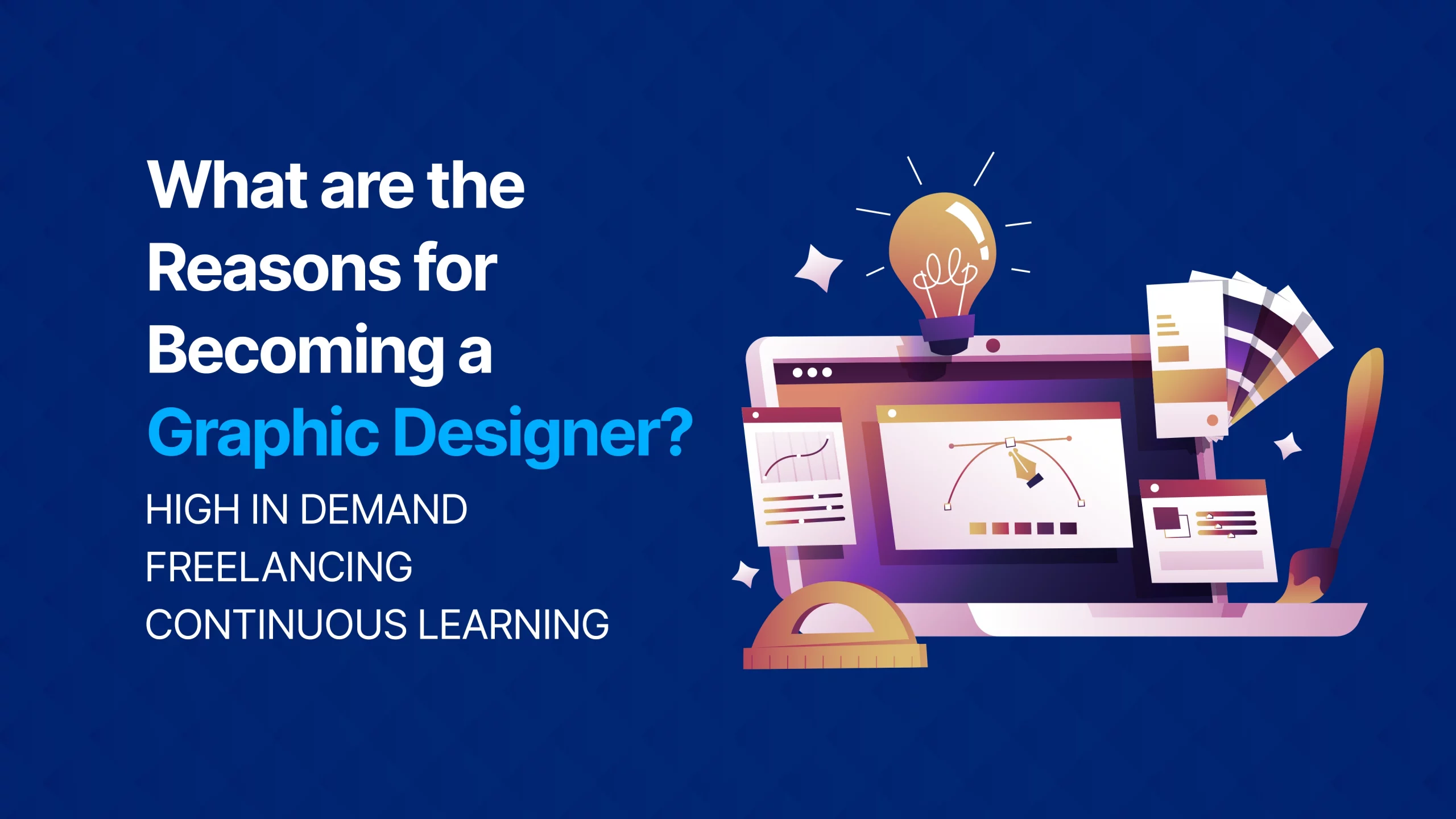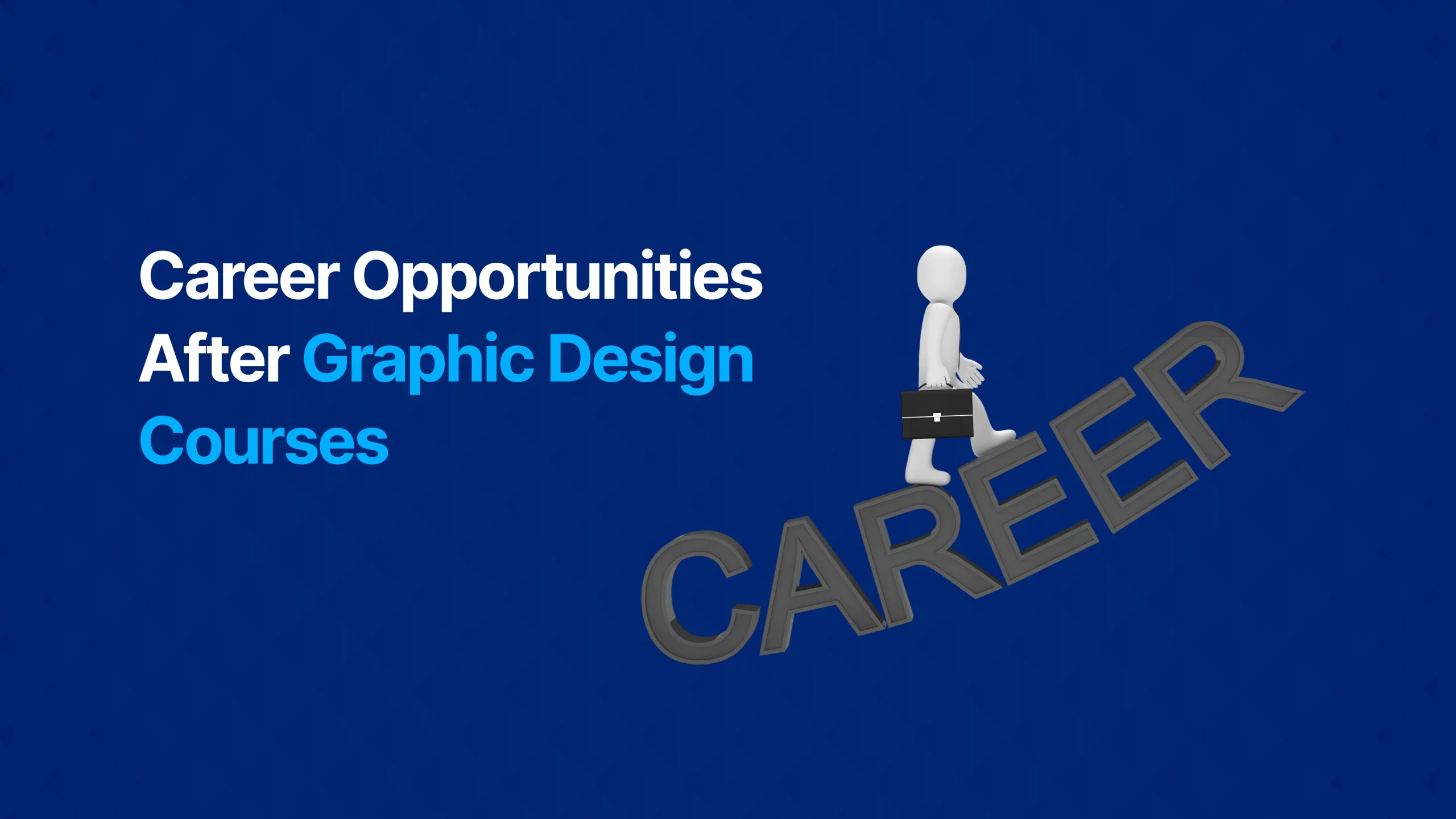With the emergence of user-friendly design platforms like Canva, Many may be hesitant to use traditional graphic design tools in the digital age. Does graphic design remain relevant? You are in the right place. Yes! A graphic design course is relevant after learning Canva. This blog will explain everything to you to better understand the value of taking a graphic design course, and much more about the difference between using Canva Designer and a professional graphic designer.
What is Canva?

Canva is an excellent tool for graphic designers at beginner levels. It is a starting point for those who are new to graphic design. Users can learn design principles and techniques. Canva allows beginners to learn about design basics. Canva offers a user-friendly interface that allows newcomers/beginners to experiment with different design elements. They can improve their skills by creating visually appealing content. Canva can also be used by small businesses for specific projects, such as marketing campaigns or social media graphics. They can produce eye-catching material quickly and efficiently to help convey their brand message. But it is not a replacement for the professional graphic designer when it comes to creating complex and high-quality designs. It’s not the best tool for creating complex designs from scratch.
Benefits of using Canva
Canva is a great resource for learning. It can also be used as a bridge to help those who want to learn more about graphic design. Some of the key features of Canva are listed below:
- Canva provides a user-friendly platform that allows users to create an array of graphics from social media posts and marketing materials. Anyone with a creative flair can bring their ideas to reality without expensive software or extensive training.
- Canva’s vast library of templates caters to a variety of design needs. You can use a template to create social media posts or presentations, flyers, or infographics. The Canva templates can be customised to match your brand or personal style. You can change elements like text, images, and colours.
- Canva offers its users a large collection of images, illustrations, and icons. The extensive library allows users to save time and money by not having to look for external images. These elements can be dragged and dropped onto the workspace to enhance designs.
- The ability to work in real-time with other teams makes it simple to share ideas, get feedback, and make changes together. This is especially useful for marketing groups or any group that needs to create cohesive visual content.
- Canva Pro is also available for users to access advanced features. This includes extra storage, premium templates, and the ability to create brand kits in order to ensure consistency throughout all materials.
- Canva is available on desktops, tablets, and smartphones. This makes it easy for users to create the designs on the move.
Limitations of Canva
Canva is an extremely famous and user-friendly graphic design tool. However, it has some limitations. Here are some limitations.
- Canva’s limited customization can be frustrating. Canva has a wide range of templates and design elements, but they can be difficult to customize beyond a certain level.
- Upgrades may be required to obtain high-quality prints or graphics.
- Canva’s premium plan comes with a brand kit. The free version lacks advanced features like logos, fonts and colors. This reduces consistency.
- Canva has limited animation options, Canva offers basic animation effects, but isn’t nearly as powerful as dedicated animation software.
- Canva Professional Designing – Canva is an easy-to-use tool for design that anyone can use. However, it does not replace professional design programs like Adobe Photoshop and Illustrator.
- Canva relies heavily on templates, which may result in designs not being original or unique. It can result in similar designs that may not be able to stand out in a competitive market.
- Canva is not the best choice for printing high-resolution materials. There may be limitations with file formats and printing resolutions.
What is Graphic Design?

Graphic design is an art form that uses technology and art to convey ideas and messages. The usage of typography and imagery to convey any information in the form of an image is a key part of graphic design. Graphic designers are involved in a variety of platforms, including print media such as magazines, brochures and posters, digital media like websites, social media and mobile apps, and even printed media. Are you still wondering “Is Graphic Design a Good Career?” and want to improve your design skills? Explore a graphic design course to improve your skills.
What are the reasons for becoming a Graphic Designer?

- Graphic designers are in high demand. In the rapidly changing technical and creative landscape of today, job prospects for graphic design professionals are excellent, which is encouraging to newcomers. Virtually every company recognizes that a graphic designer, or design team, is essential.
- Although many graphic designers work for companies, almost 90% are freelancers. You can explore different industries and environments. There are many opportunities for you to choose the best fit for your lifestyle, whether it’s the stability of a 9-5 job with one employer or the flexibility of working on multiple projects with different clients.
- You will be constantly learning if you choose a career in graphic design. You will have the opportunity to work in different media and on a variety of projects. You’ll never be bored in this dynamic office environment. You’ll always be faced with new and exciting challenges, whether you focus on packaging design or apparel.
What are the responsibilities of Graphic Designers?
To complete complex projects, graphic designers use sophisticated tools like Adobe Photoshop, Illustrator and InDesign. Understanding design principles like colour theory, typography and composition allows graphic designers to create effective visual communication for specific audiences.
Brand Consistency:
Maintaining brand consistency is essential for graphic designers.Create visual identities for their target audiences. Content must be aligned with brand values and messaging.
Create unique visual identities:
Graphic designers are creative and innovative, providing solutions that reflect a brand’s unique identity. Graphic designers are able to create visuals that can be remembered by audiences and tell a story. Canva is a great place to start for graphic designers. However, a professional graphic designer will be needed to communicate the brand’s message and create its perception.
Diploma in Graphic Design Certification
The shortest courses are certificate courses in graphic design. They are usually spread over 4 months. These are the recommended programs for those who want to learn about practical graphic design concepts to become a graphic designer, without having to spend too much time learning detailed theoretical concepts.
After 12th grade, students can take a video editing course and graphic design courses after 12th to learn photo editing and illustration, digital painting, layouts, etc. Graphic design is a field that can be learned and mastered in a short time.
The graphic design courses include training on popular design software and tools, including:
- Adobe Photoshop
- InDesign
- Illustrator
- Sketchbook
- Figma, etc.
Duration: 3- 4 months
Eligibility : 10th and 12th passes
Learn more about the Diploma in Graphic Design Course at Digital Nest School of Business.
Career Opportunities After Graphic Design Courses

You might have a question: Is graphic design a good career in India? The study of graphic design can lead to a wide range of career opportunities in different industries. After completing graphic design courses, you may want to consider a variety of career options.
- Graphic Designer – This is the most direct position, in which you will create visuals, such as advertisements, branding, packaging and web design, for print and digital media.
- Web Designer: Concentrate solely on creating and designing the look and feel for websites. Ensure they are visually appealing and user-friendly.
- UI/UX designer: Work focuses on designing and planning the user interface for websites and mobile applications to meet the needs of users and give them a positive experience.
- Art Director: You’ll oversee the visual aspects of a project, coordinating with other designers and artists to ensure a consistent look during brainstorming and implementation phases.
- Brand identity designer: Responsible for establishing and maintaining the visual identity of a brand, including its logo, typography and color scheme, as well as promotional materials.
- Illustrator – Creates original artwork and illustrations for magazines, books, advertisements and other media. Often working on a freelance basis or contract basis.
- Animator: Use your design skills and animation to create motion graphics for films, videos, and online content.
- Print Designer: Specializes in the design of printed materials such as posters, brochures, flyers and publications.
- Packaging designer: Focuses on the design and layout of packaging to ensure it is both attractive and functional, as well as aligned with a brand’s strategy.
- Social Media Manager: Use graphic design skills to create visual content on social media platforms. Also, engage in content strategy and analysis.
- Freelance designer: Working independently, you will be able to take on different projects for various clients. This allows you flexibility and the opportunity to work on a variety of creative tasks.
- Design Educator: If you are passionate about teaching, consider teaching graphic design at universities or schools.
Conclusion
Canva makes graphic design simpler for beginners. It cannot, however, replace the creativity, expertise and skills of professional graphic designers. Canva was designed as a simple and quick tool. However, graphic design requires an understanding of concepts and problem-solving. If you’re interested in becoming a graphic designer, don’t let the popularity of simple-to-use software deter you. Enrolling in an exciting graphic design course is the best way to develop your skills and start your career. You might find the Certificate in Graphic Design at Digital Nest School of Business useful. Your creativity will be highly valued.
Frequently Asked Questions
How do you become a graphic designer?
Candidates can choose to become a graphic designer by pursuing a diploma/certificate or a degree following their 12th grade. Many institutes offer graphic design online courses.
After 12th grade, are graphic design courses available?
Yes, you can choose from a variety of graphic design courses after 12th to launch your career.
Is graphic design a career worth pursuing?
For those who are creative and have a passion for visual communications, graphic design can be an exciting career.
What is the salary for graphic designers?
Graphic design salaries are good, particularly in terms of experience and specialization. Graphic designers with the right skills can earn competitive salaries in many areas. The average salary of a graphic designer is ₹1.5 Lakhs to ₹7.2 Lakhs
Graphic design course fees?
The fee of a graphic design course can vary greatly depending on the location and institution. It's important to compare different programs and find one that suits your educational and budget needs.
A graphic designer's salary per month?
In India, the salary of a graphic designer can range from Rs 20,000 per month to Rs 60,000, depending on their experience and level of skill.
Which skills are necessary for a career in Graphic Design?
Use of design software, such as Adobe Creative Cloud, CorelDRAW, Adobe Photoshop, Illustrator, and InDesign.
What are the branches or categories of Graphic Design?
Graphic design is a broad term that encompasses a variety of types. Each caters to different industries and purposes. Include Visual identity graphic designs, User interface graphics, Motion graphic designs, Publication graphics design, Packaging graphic designers, Marketing & Advertising graphic designs, Environmental graphic art and illustrations.


